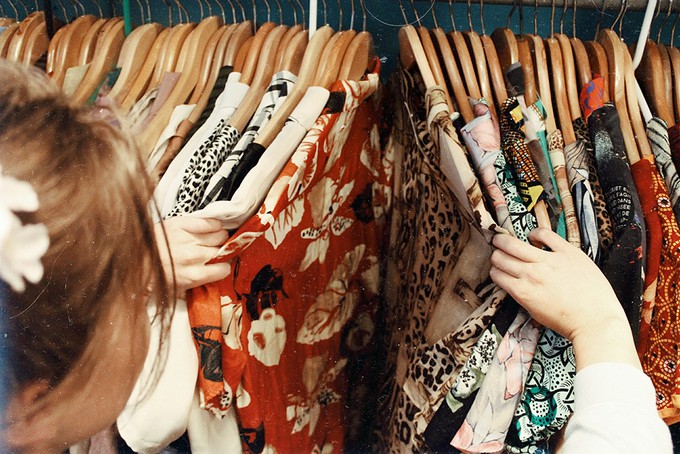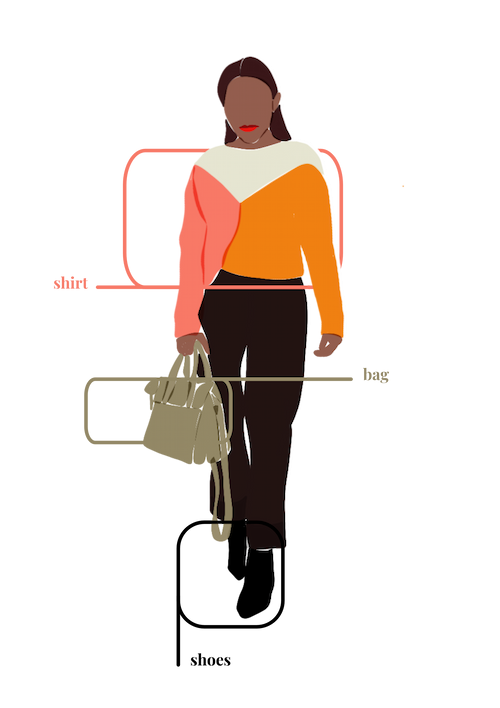- Clothes
- Bags
- Accessories
-
Inspiration
- Shoes
Vintage Sustainable Fashion? Why Retro Isn’t Always Ethical

From charity shops to thrifting and even celebrities showcasing more and more second-hand outfits, you’ve probably noticed that retro clothes have been growing in popularity. Surely, vintage sustainable fashion is always a thing, right?
Unfortunately, not exactly.
Second-hand & vintage fashion in a sustainable context
While the definition isn’t set in stone, the industry-standard tends to label as ‘vintage’ only clothes made between twenty and a hundred years ago, as long as they reflect their decade’s style.
(Does anyone else find it slightly unsettling that ‘twenty years ago’ now means the start of the 2000s and not the 80s?!).

There actually used to be a stigma around wearing second-hand clothing instead of purchasing new ones.
However, it has now become a status symbol as well as a more ethical alternative (in some cases) to fast fashion.
So let’s start by acknowledging the benefits of vintage sustainable fashion.
The pros of vintage sustainable fashion from an environmental & ethical point of view

- Because vintage fashion mainly consists of second-hand garments, it doesn’t involve the production of new ones. This actually tends to be the most polluting stage of the entire supply chain, so bypassing it all together is great news for the planet
- Choosing to wear vintage sustainable fashion helps consumers break the vicious cycle of fast fashion trends: when followed, they lead to buying items that are currently considered trendy only to discard them the next season when they’re ‘out’
- Unlike fast fashion clothes designed to fall apart after a few wearings, most retro garments were actually made to last, much like sustainable fashion. So, choosing vintage clothes will usually allow you to reduce waste
The cons of vintage fashion: when second-hand retro clothes aren’t that sustainable

- An alarming trend that we’ve noticed in a few so-called vintage shops is that they include new garments designed to look retro (clue: this is easier to spot if there are multiple sizes for each item). Because they’re manufactured from scratch, this defeats the whole purpose of what should have been a second-hand purchase
- There’s a worrying lack of transparency in most thrift stores. This means that you won’t be able to tell if the workers involved within their supply chain have actually been paid fair wages
- Due to the previous problem and missing labels, you also can't usually find out if toxic chemicals or dyes have been used nor what materials those garments consist of
- Most major retailers actually source their vintage clothes from Pakistan, adding many miles and carbon emissions to their garments
- If synthetic materials like polyester are involved, vintage clothes still present problems like the shedding of microplastics whenever washed
- Since vintage sustainable fashion tends to be cheaper, it can actually fuel a cycle of purchasing new clothes and discarding them regularly, much like… yep, you’ve guessed it: fast fashion
So, is vintage fashion sustainable?

Overall, we’d say that vintage fashion is definitely more sustainable than its ‘fast’ counterpart. However, it’s important to note that retro isn’t automatically eco-friendly or ethical.
Much like any kind of fashion, vintage clothes should also only be purchased when needed, and we believe that the industry would definitely benefit from more transparency.
Even though vintage sustainable fashion isn’t always a given, how we consume it can make the difference.
Trying to make your wardrobe more ethical? Sign up for our newsletter to get practical and encouraging tips while discovering new sustainable brands.
Share our story
Related articles
How to Shop Sustainable Fashion: 5 Easy Steps
Not sure where to begin your quest towards an ethical wardrobe? Start here! This is how to shop sustainable fashion clothes that match your style and ethos.
9 Sustainable Fashion Bloggers to Follow to Stay Inspired
Enough with influencers promoting fast fashion and overconsumption! Follow the best sustainable fashion blogger for a slower and more ethical lifestyle.
How to Find Sustainable Clothing Easily (Without 100s of Open Tabs)
Worried you’ll fall for greenwashing? Tired of jumping from one online store to the next? We’ve got you. Here’s how to find sustainable clothing in 3 easy ways.
Project Cece is a platform that collects ethical fashion from vetted brands and shops in one place. Browse ethical fashion for women and men and find items that fit your style, budget and values!



